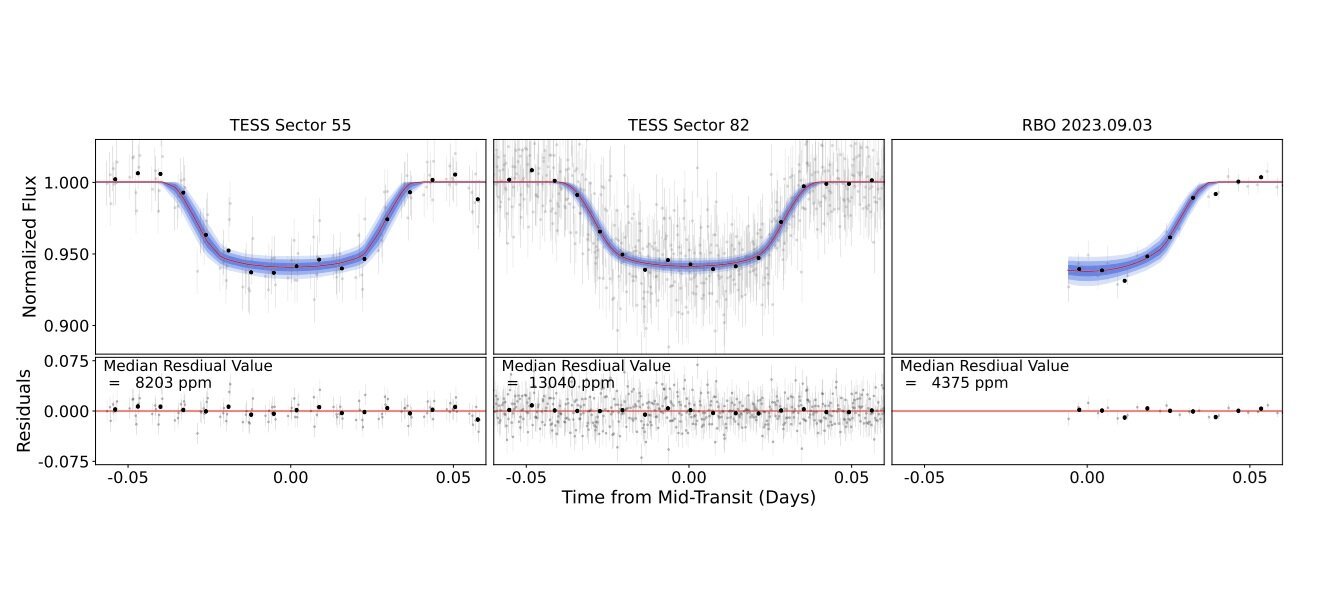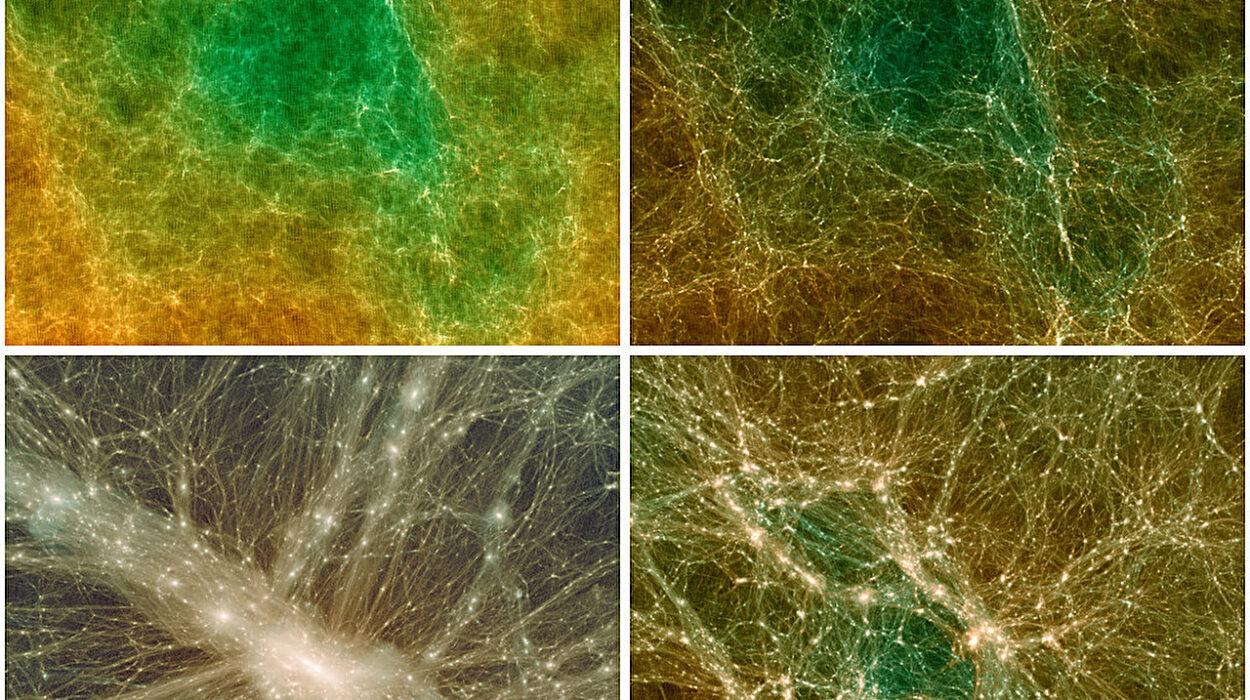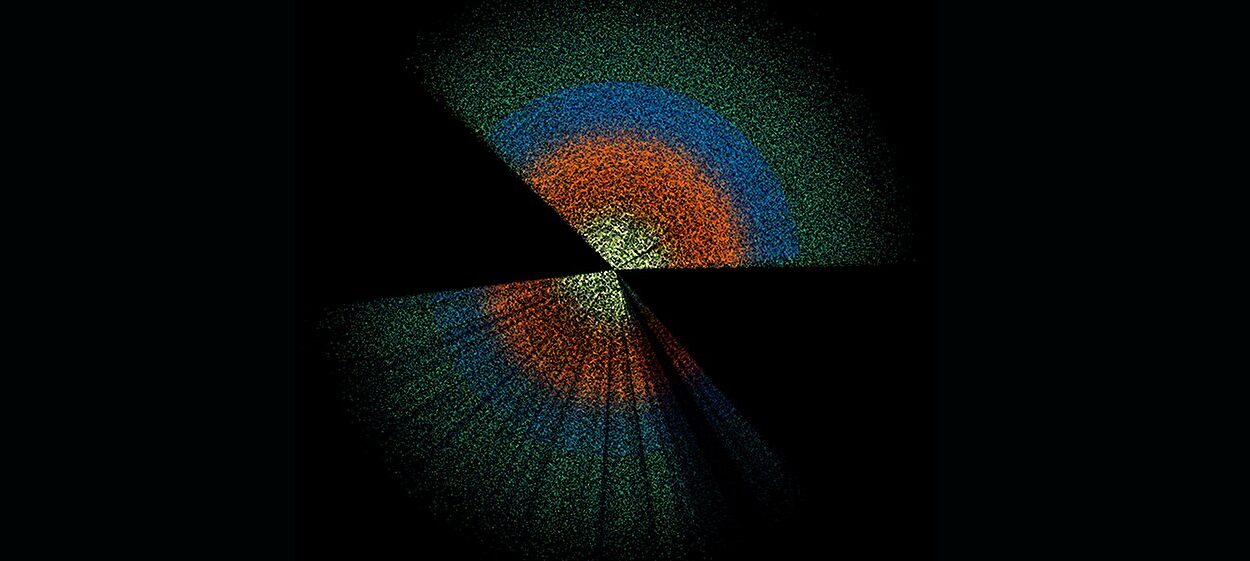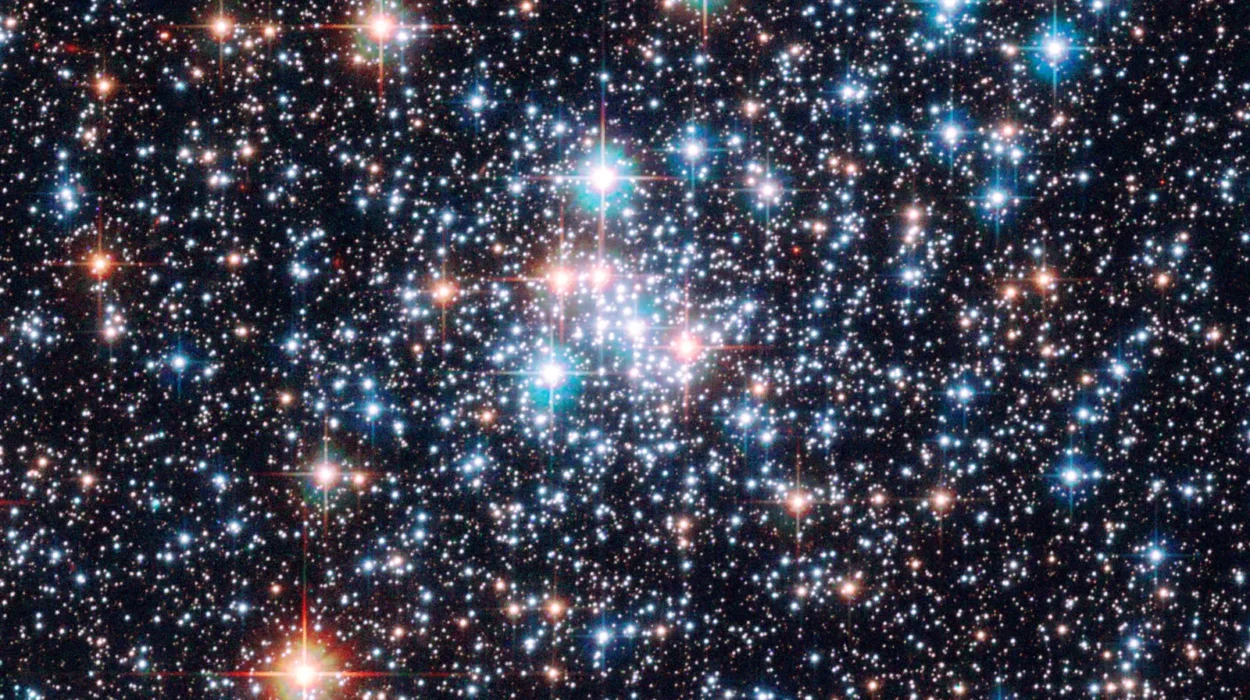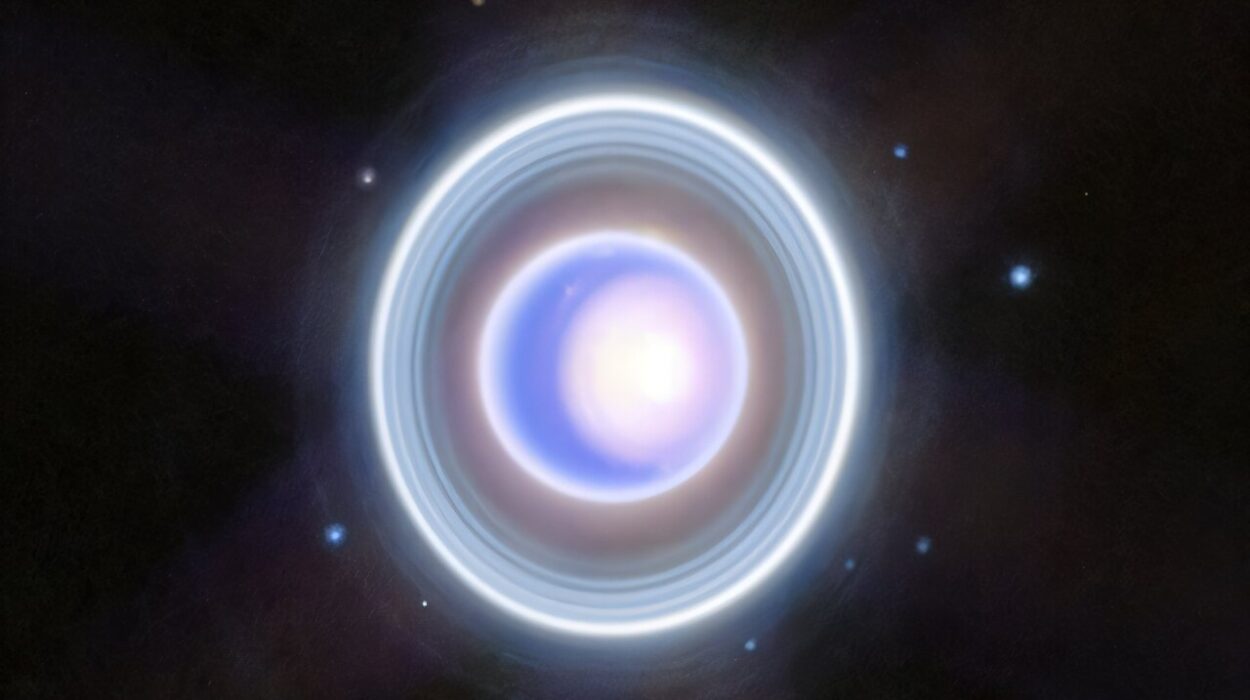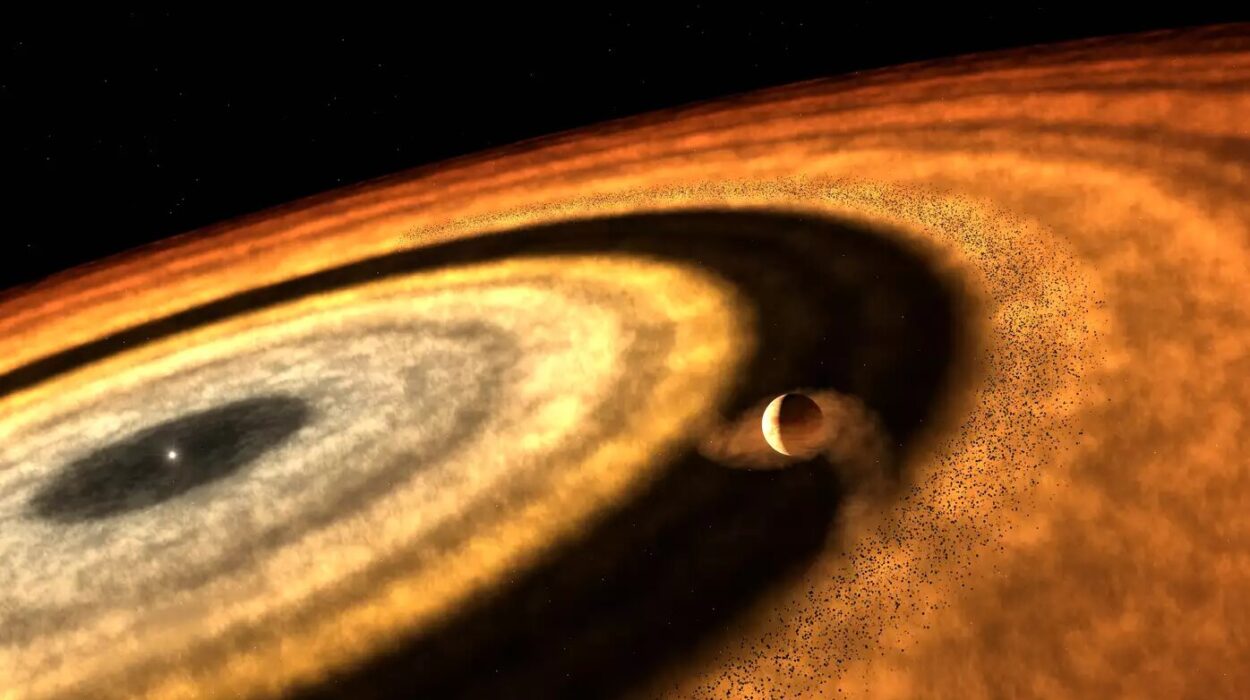High above Earth, NASA’s Transiting Exoplanet Survey Satellite—better known as TESS—watches the sky for the faintest dips in starlight. Each flicker, each brief shadow, could mean that a planet is crossing its star, revealing the presence of another world. Since its launch in 2018, TESS has transformed our understanding of the universe beyond our solar system.
Now, astronomers from the University of California, Irvine (UCI), together with an international team of researchers, have discovered two new alien worlds using this vigilant space telescope. The discovery, led by Shane O’Brien and his colleagues, adds to the growing family of known exoplanets—worlds orbiting stars other than our Sun. These planets, named TOI-5916 b and TOI-6158 b, orbit faint red stars called M-dwarfs, and their characteristics are both familiar and strange.
A New Discovery Among Thousands
TESS was designed to scan the sky in search of exoplanets orbiting the brightest nearby stars. It has already observed around 200,000 such stars, uncovering more than 7,700 potential exoplanets—known as TESS Objects of Interest (TOIs). Of these, over 700 have been confirmed, and the count continues to grow.
Among this cosmic harvest, TOI-5916 and TOI-6158 stood out. Both are dim, cool M-dwarf stars—roughly half the size and mass of the Sun—residing hundreds of light-years away. In the flickering light curves from these stars, the TESS team spotted repeating patterns that hinted at something orbiting them.
To confirm their suspicions, the researchers turned to ground-based observatories. Using the Red Buttes Observatory in Wyoming and the Swope Telescope in Chile, they observed the stars from Earth. These observations, combined with precise radial velocity measurements from the Habitable-zone Planet Finder instrument, confirmed what TESS had first suggested: both stars are orbited by giant planets.
Meet TOI-5916 b: The Warm Giant
The first planet, TOI-5916 b, is a gas giant roughly the size of Jupiter but with a lower mass, making it less dense—more like Saturn in its internal structure. It orbits its host star at a blistering pace, completing one full revolution every 2.37 days. To put that in perspective, Mercury—the closest planet to our Sun—takes 88 days to complete an orbit.
At a distance of just 0.028 astronomical units (AU) from its star—less than 3% of the distance between Earth and the Sun—TOI-5916 b is intensely heated. Its estimated temperature is 716 Kelvin (about 443°C or 830°F), hot enough to vaporize metals and cause its atmosphere to expand.
Despite its proximity and heat, TOI-5916 b’s density is surprisingly low—just 0.73 grams per cubic centimeter, less than water. This low density suggests a thick, bloated atmosphere, likely composed of hydrogen and helium.
Meet TOI-6158 b: A Gentle Twin
The second planet, TOI-6158 b, is slightly smaller and lighter. Measuring about 0.93 times Jupiter’s radius and 0.42 times its mass, it too is a puffed-up gas giant with a Saturn-like density of 0.66 grams per cubic centimeter.
TOI-6158 b orbits its star every 3.04 days, at a slightly greater distance of 0.033 AU. With an equilibrium temperature of 636 Kelvin (about 363°C or 685°F), it’s still scorching by Earthly standards but cooler than its sibling.
Both of these worlds fall into a category known as “warm Jupiters”—gas giants that orbit their stars at moderate distances, warmer than Jupiter but cooler than the ultra-hot “hot Jupiters” that orbit in just a day or two.
The Stars They Call Home
The parent stars, TOI-5916 and TOI-6158, are small and faint compared to our Sun. They are M-dwarfs, a class of stars that make up roughly 70% of all stars in our galaxy.
TOI-5916 has a surface temperature of 3,541 Kelvin, while TOI-6158 is slightly cooler at 3,467 Kelvin. Both are about half the Sun’s size and mass, and they lie at distances of 639 light-years and 592 light-years, respectively.
Because M-dwarfs are cooler and dimmer than Sun-like stars, planets orbiting close to them can still maintain moderate temperatures. In this case, though, the planets orbit so near that they are locked in a constant dance of heat and gravity—likely tidally locked, with one side forever facing their star in perpetual daylight and the other in endless night.
Why Saturn-Like Densities Matter
One of the most intriguing aspects of these discoveries is the planets’ low densities. Despite being roughly the same size as Jupiter, both worlds are much lighter, meaning their interiors are dominated by thick gaseous envelopes rather than solid cores.
This puffiness is a common feature of GEMS—Giant Exoplanets around M-dwarfs—a category that now includes just over thirty known examples. Astronomers have noticed that GEMS tend to have densities closer to Saturn’s than Jupiter’s, suggesting something unique about how giant planets form around smaller, cooler stars.
The low density might result from intense stellar radiation that heats and inflates their atmospheres, or it could reflect differences in how gas giants form in the disks of material around M-dwarfs. Each new discovery helps refine our understanding of these processes and the diversity of planetary systems across the galaxy.
A Window into Planetary Evolution
Studying planets like TOI-5916 b and TOI-6158 b is about more than cataloging exotic worlds—it’s about tracing the evolution of planetary systems. M-dwarf stars are the most common type in the Milky Way, which means that understanding their planets gives scientists valuable insight into what the majority of planetary systems might look like.
Since M-dwarfs burn their fuel slowly, they live for trillions of years—much longer than our Sun. Their planets could exist for ages, long after the Sun and Earth are gone. But their close-in planets often endure intense radiation and stellar flares, shaping their atmospheres in dramatic ways.
By observing the light that filters through these alien atmospheres as the planets pass in front of their stars, future telescopes like the James Webb Space Telescope (JWST) or the Nancy Grace Roman Space Telescope could analyze their chemical compositions, searching for clues about their formation and evolution.
The Legacy of TESS
The discovery of TOI-5916 b and TOI-6158 b is another triumph for NASA’s TESS mission. Designed as a follow-up to the legendary Kepler Space Telescope, TESS focuses on bright, nearby stars, making it easier for ground-based observatories to confirm and study new planets.
So far, TESS has helped identify planets ranging from small rocky worlds just slightly larger than Earth to massive gas giants orbiting distant suns. Each detection deepens our knowledge of how planetary systems form and evolve—and how our own solar system fits into the broader cosmic story.
With more than 7,700 candidates and hundreds still awaiting confirmation, TESS’s legacy is far from complete. Each passing year promises new discoveries, and each discovery pushes the boundaries of what we know about life’s potential in the universe.
Looking Beyond the Numbers
Beyond the technical data—the orbital periods, masses, and densities—there’s a deeper beauty to these discoveries. Every exoplanet is a world that may have sunsets, storms, and skies utterly unlike anything on Earth. Though TOI-5916 b and TOI-6158 b are gas giants inhospitable to life as we know it, their existence adds to the diversity of our galaxy and the wonder of the human quest to explore it.
They remind us that even the smallest, faintest stars can host magnificent worlds, each governed by the same physical laws that shape our own. The same gravity that keeps our Moon in orbit around Earth also holds these distant planets in their fiery dance around their red suns.
The Endless Search
Astronomy is, at its heart, an act of curiosity—a longing to understand where we come from and where we fit in the vastness of space. Every new exoplanet found by TESS brings us one step closer to answering the timeless question: Are we alone?
For now, TOI-5916 b and TOI-6158 b stand as silent ambassadors of that search—two giant worlds circling dim stars, hundreds of light-years away, yet brought into focus by the patient gaze of a satellite orbiting Earth.
Their discovery is a testament to human ingenuity, the power of collaboration, and the enduring spirit of exploration that drives us to look up, to wonder, and to find meaning among the stars.
More information: Shane O’Brien et al, Searching for GEMS: TOI-5916 b & TOI-6158 b are two Saturn-density planets orbiting M2 dwarfs, arXiv (2025). DOI: 10.48550/arxiv.2510.11798
